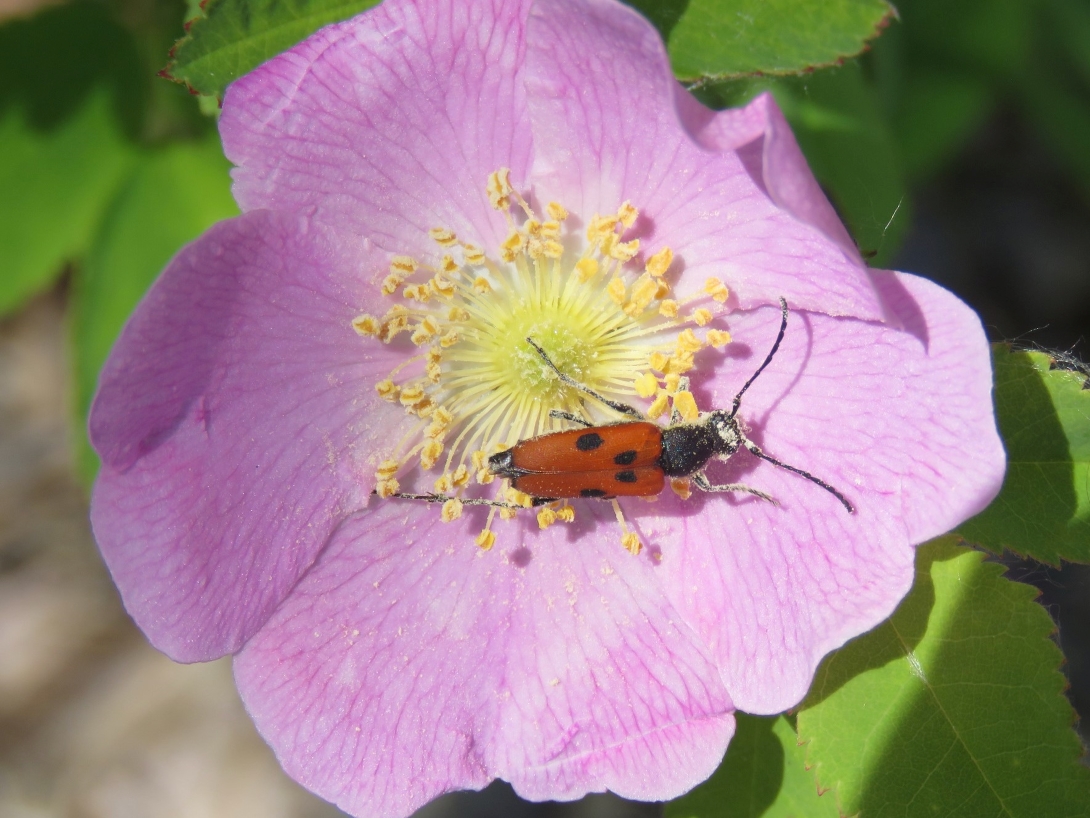Beetle-mania: Meet nature’s unsung pollinators
Did you know that there are more than 300,000 beetle species worldwide? Some shine with metallic or glossy flair, some sport funky patterns and some rock seriously strange-looking antennae.
Those cute little ladybugs you spot every summer? Those are beetles, too! While they may look quite different from one another, most beetle species are capable pollinators, having fulfilled this role in the ecosystem since the age of the dinosaurs.
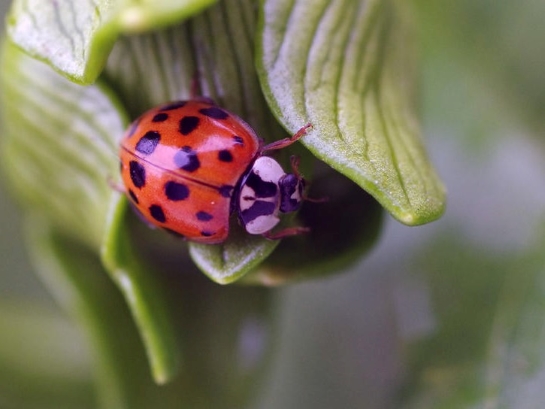
Some beetles move pollen from flower to flower, helping plants reproduce and supporting healthy plant populations. If this surprises you, that may be because they have been living in the shadow of the more-celebrated pollinators like bees and butterflies.
What makes beetles unique?
Like butterflies and some other insects, beetles go through a complete metamorphosis with dramatic changes in between each life stage: egg, larva, pupa and adult. As adults, they develop their distinct arrangement of wings, with a hardened front pair, called elytra, covering and protecting a second, more delicate pair used for flying.
The adult stage is when beetles start cruising from flower to flower, unlocking their pollination potential. As they visit flowers to eat pollen, pollen grains stick to the beetles’ bodies and are carried from plant to plant. This is how beetles can pollinate flowers despite lacking specialized body parts for carrying pollen like the pollen baskets on the legs of certain bees. Beetles complement the efforts of other pollinators, contributing to the overall performance of the pollinator population and health of the ecosystem as a whole.
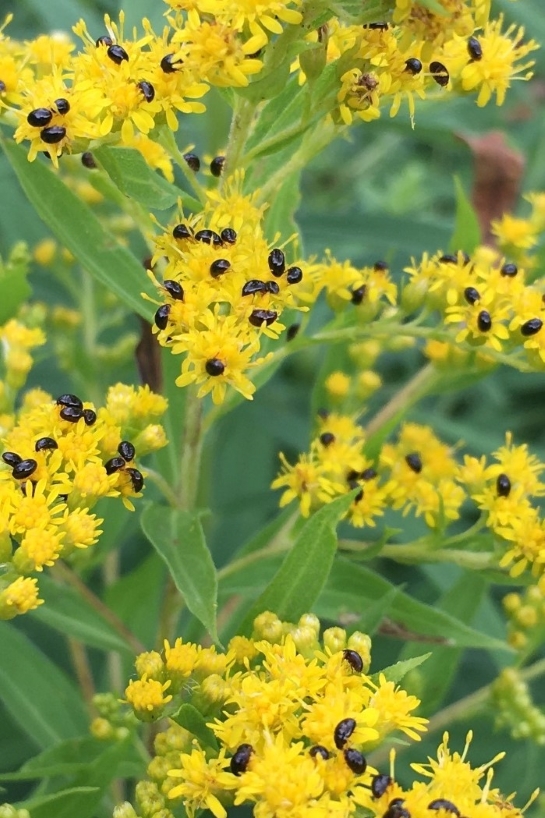
Beetles and native plants: a super group for the ages
Flowers and beetles go way back. Research suggests beetles entered the fossil record 200-300 million years ago, before bees, and were already here on Earth when intricately structured flowering plants burst onto the scene roughly 100 million years ago. Some of the plant species that beetles pollinate today, like magnolias, have similarly ancient origins.
Unlike delicate nectar sippers such as hummingbirds and butterflies, beetles often damage or eat parts of the plants they pollinate. However, native plants have evolved defenses and become resilient to wear and tear from native beetles — just one example of how beetles and flowering plants have influenced each other over the course of their long history.
Beetles are especially attracted to heavily scented flowers that are open during the day. Plants pollinated by beetles in Canada include water lilies, goldenrods, yarrow and sunflowers.
Let’s meet a few of these well-rounded insects!
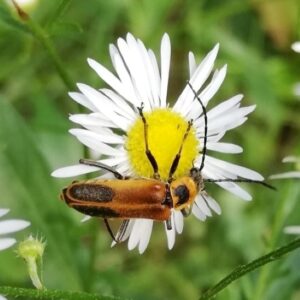
Soldier beetles (Cantharidae family) — As adults, these slim, centimetre-long beetles have leathery-looking outer wings and yellow, orange, brown or black markings. This bold colouring, like the monarch butterfly’s telltale orange and black pattern, is thought to ward off predators by signalling an unpleasant taste. Species in this group eat pollen and nectar, are gentle on plants and are closely related to fireflies.
Shining flower beetles (Phalacridae family) — You might not expect these teeny tiny insects to be fully grown, but 1-3 millimetres is the typical adult length! Members of this family are round or oval, lustrous and dark coloured (black or brown). Some species feed on pollen and can be seen sprinkled over goldenrod or asters like sesame seeds on a bagel while others prefer to feed on fungi.
Checkered beetles (Cleridae family) — As the name suggests, adult checkered beetles often sport patches of bright colours (like orange, yellow, red or blue) in contrasting patterns. They range in size from 2 to 24 millimetres and are covered with bristly hairs. Some species of checkered beetles feed on flower pollen and can be spotted on plants including Canada goldenrod, common yarrow, black-eyed Susan and purple coneflower.
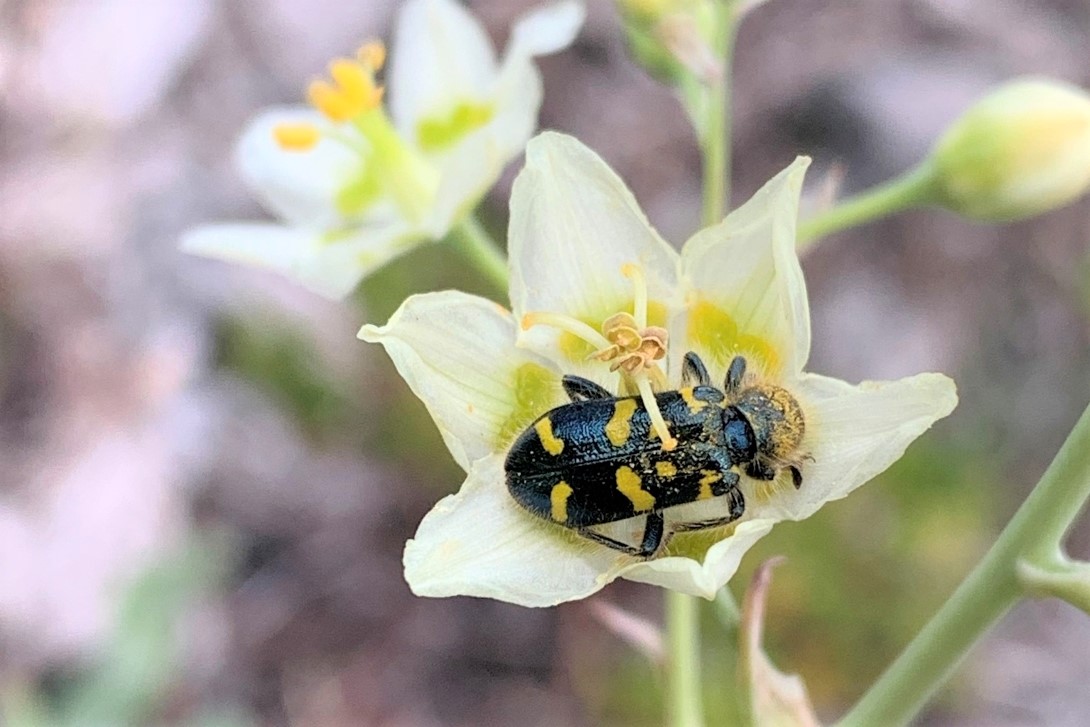
Flower longhorn beetles (Cerambycidae family, Lepturinae subfamily) — Adults in this diverse group come in a range of colours, patterns and sizes, but most species have a long, slender body shape, a “broad-shouldered” look and long, whisker-like antennae. Many eat nectar and pollen from plants in the carrot family (e.g., golden Alexanders), wild roses and many other species.
Say it with flowers
Got a crush on beetles? Show them you care by growing flowering plants native to your region that help support their populations. As they benefit from the habitat you provide, you’ll get the chance to admire and know your local beetles better. Visit re:grow, our how-to hub for growing native plants, to learn more.
